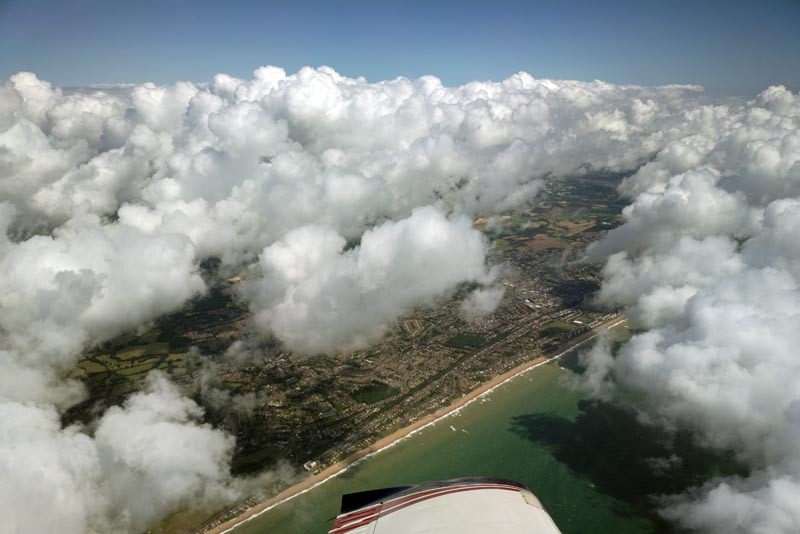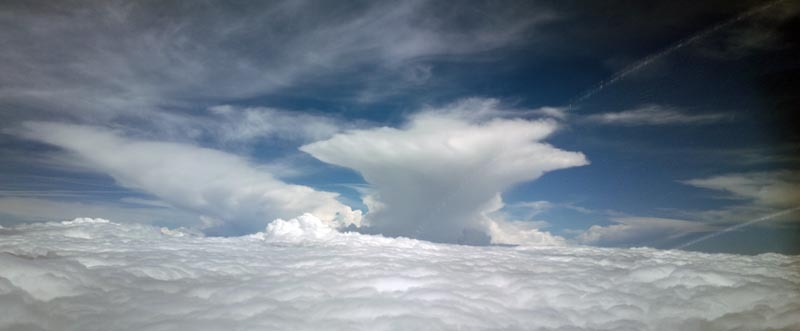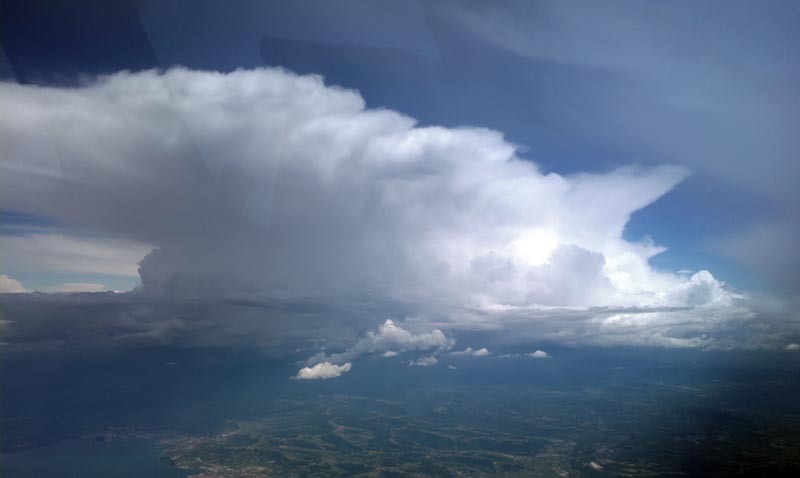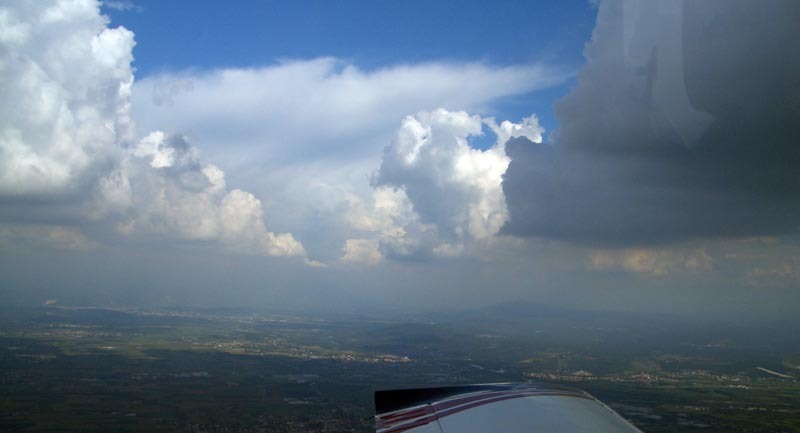Both TCUs and CBs can be invisible on a stormscope, though both can show up too. It depends on the stage of their formation.
If you fly around in VMC and watch the stormscope, you see some very small - barely visible bits of white fluff - formations striking and some huge stuff - going to FL300 plus - not striking.
That's why I don't fly in high altitude IMC if there is the slightest chance of meeting something big.
This presumably is why all "proper planes" have radar, and not the much much cheaper stormscope (€50k-200k versus €3k-5k). One would never fly into a big strike cluster showing on a stormscope, but the absence of strikes could just be a massive CB which is building up and not yet striking, and which will start striking when you are right inside it. Or a TCU - there is no absolute boundary between a TCU and a CB. Whereas radar will show the concentration of water which is needed for these monsters to build up. I was nevertheless suprised to hear from an Airbus pilot recently that they have radar but no stormscope (sferics) equipment, as the two ought to be very complementary (the stormscope won't suffer from masking for example, where a nearby CB is preventing a much bigger one behind it showing on radar).
Cobalt posted an interesting point:
I'm sure the best way to avoid the embedded TCU would have been to turn on the ADF, and fly at right angles to the needle...
Now how does that work? Should I tune in a high or a low frequency?
This was meant as a joke. One of the many issues of this ancient navigation system is that it points to the strongest radio source of the selected frequency. A CB creates a lot of static across a huge frequency range so if you are unlucky the needle points straight at the CB instead of at the nav aid, which can ruin your whole day if that happens to be your next waypoint. I don't think one could make a reliable avoidance strategy out of that.
Less of an issue these days where the most likely real life application is as a torture device for IR applicants.
there is no absolute boundary between a TCU and a CB
Most pilots use a working definition of a CB. A "CB" is the smallest convective cloud they won't fly through!
The technical distinction is that the TCU becomes a CB when it starts to glaciate at the top.
To return to Lenthamen's original post, it is likely that a late evening TCU with tops at FL120 will be of the pussy cat variety of TCUs. Nevertheless if most of one's experience of IMC flying has been under the hood or in smooth stratus even a modest CU can be quite surprising. Perhaps it would be an idea to deliberately fly through a building CU in a non-risky situation (without passengers) to see what it feels like.
How do you tell if a CU is small enough to fly through without being to unpleasant or when it is to big.
How do you tell if a CU is small enough to fly through without being to unpleasant or when it is to big.
You start with asking how much you value your principal relationship.
Then we can look at some clouds...
Unpleasant chop (will make a lot of passengers sick) but safe at Va and real (single) men fly straight through it:

Also should be safe at Va but very rough:

Extremely rough, aircraft probably borderline-controllable, no chance of tuning radios etc, autopilot will disconnect, fly halfway between Vs and Va in this one, and just keep wings level and control the pitch, forget altitude hold:

Go halfway between Vs and Va, and pray, and call your A&P when you land:

The last two will probably make your other half never fly with you again, and in general correctly so. I probably wouldn't, if it was anywhere remotely avoidable. Aircraft breakup is very possible, on say a PA28.
The above advice is worth what you are paying for it 
I'm with peter on this...except that the tolerance level of my other half is a bit higher, and I think he is a bit pessimistic on the 2nd photo... but in any case, the name of the game is to get out on top rather fly in the chop.
Do not for a minute believe that a TCU/CB is weak just because it tops out at FL120! A low top can either mean low convective energy [pussycat], OR a strong inversion [might turn out to be a real tiger below that]... the only unequivocally good thing about low tops is that you can outclimb the cloud.
I meant to post slightly bigger buildups for pic #2. How about this
